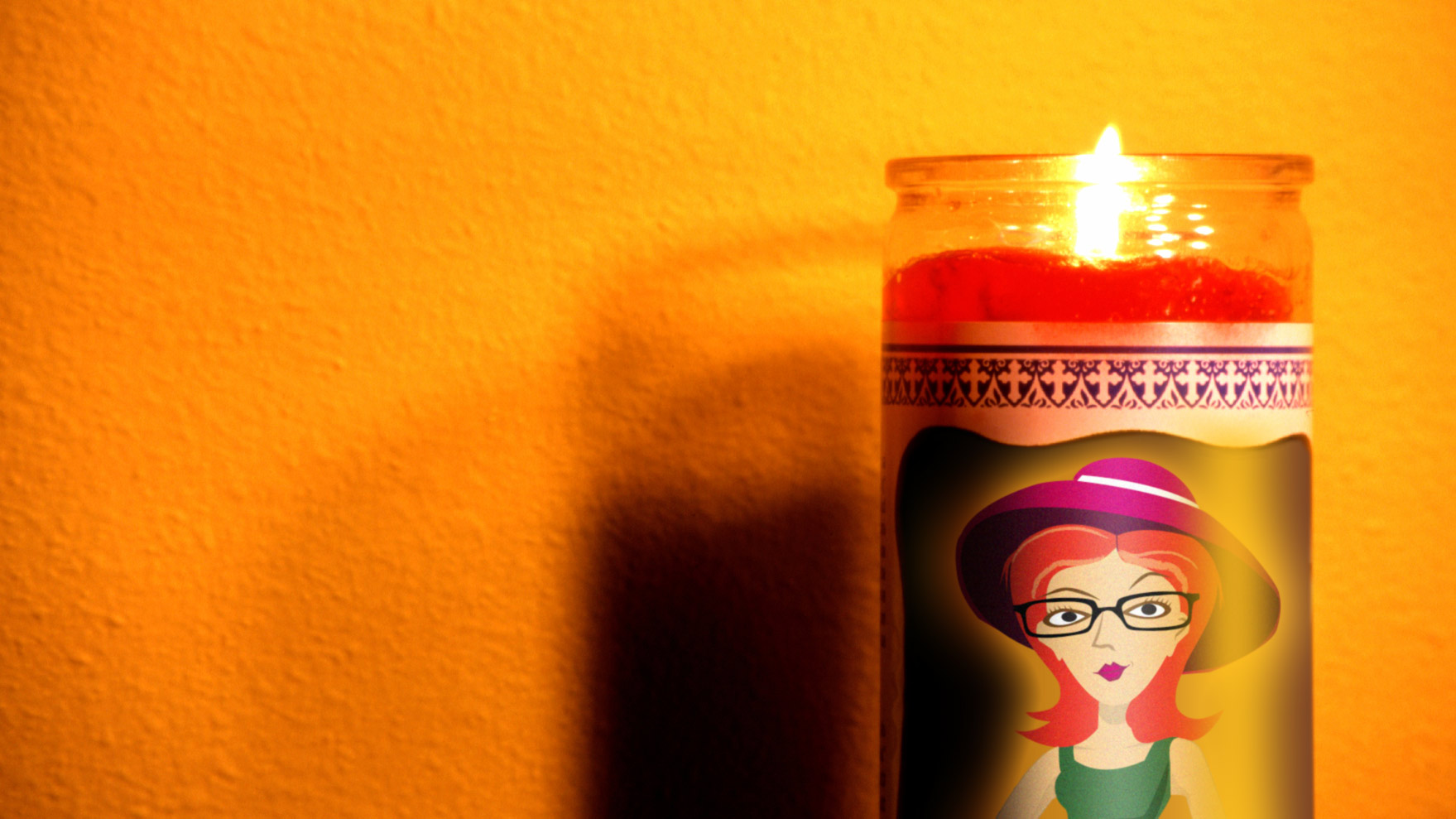Send your question to Umbra!
Q. HELP. I’m a soy candle devotee, but when I’ve burned them down to the bottom, I’m basically left with a glass jar with an inch of petrified wax at the bottom. I don’t wanna toss it in the trash, but can the glass be recycled? And do I have to somehow dig out the hardened wax and/or break the glass to do so? NOTE: I am NOT one of those crafty Susie Homemaker types who has a clever use for an old candle jar. I’m never gonna drink wine out of it.
Holly R.
Portland, Ore.
A. Dearest Holly,
My, readers do seem to have candles on the brain lately. Yours was one of several recent burning questions about the wax cylinders beloved by everyone from real estate agents staging homes to teenagers trying to fool parents about what else they’re lighting up in the bedroom. So let’s shed a little flickering light on the matter of disposal.
Good news, Holly: I checked with Portland’s recycling company, and you can recycle clean glass candle jars. Non-Portlanders should check with their waste disposal companies directly to make sure this type of glass can go in the curbside bin.
That’s the easy part. The (slightly) hard part is getting those jars clean. Soy candles reportedly have an edge here: I’m hearing claims that soy wax dissolves in soap and water. I’ve never tried this, and I don’t have any soy candles lying around to check – but it’s worth a try. For other types of candles, try the freezer method: Pop the jar in the freezer for several hours. This hardens and shrinks the wax, making it easier to chip out with a butter knife. A little baby oil or vinegar can help sweep up any leftover smears in the jar.
I know you’re no upcycler, Holly, but I can’t resist sharing some of the creative reuse projects for candle jars out there. Check out a few here (think vases, planters, bathroom storage, and desktop organizers) and here (change jars, art-supply holders, bean containers). In fact, I wouldn’t be surprised if you could sell (or give) your clean jars to local Susie Homemaker types who’d be thrilled to find more DIY supplies. Score one for keeping items out of the waste stream!
And for your next purchase, consider organic soy, or read on for an even more sustainable mood-setter.
Waxenly,
Umbra
Q. I’m running low on my stock of tea lights. The ones I’ve been using are paraffin/vegetable wax mix. My question is, what should I restock my tea light tin with?
Paraffin has got to be my worst option – fossil fuels. So vegetable oil of some kind seems a better option. I’ve read you can get 20 times more wax from a kilometer of palm plantation than soy plantation – but people seem to think soy is better, and I know there are lots of ethical issues around palm oil.
Pru
London, England
A. Dearest Pru,
I confess I’m a bit confused by your question (must be your lovely accent). Are we talking about refillable tea lights – the ones that look like tiny oil lamps? Or are you simply wondering about the next batch of wax tea lights to buy? Either way, I’m here for you.
My best guess is that you’re restocking your candle drawer. If that’s the case, you’re right that conventional paraffin candles, being petroleum products, are not the best choice. They’re also linked to indoor air pollution by way of the volatile organic compounds (VOCs) they emit when burned. I’m not a big fan of palm oil or soy wax, either, unless the latter is organic soy. Palm oil comes to us loaded with the implications of deforestation and habitat loss, while soy is a huge and pesticide-intensive monocrop.
My pick: 100-percent beeswax candles, still the best natural, nontoxic choice. Go for local when you can get it.
And if it’s refillable tea lights that light your fire, you’ve got a similar issue: Liquid paraffin and palm kernel oil present the same problems the wax versions do. But I also uncovered reports that plain old vegetable oil will work in a tiny lamp. There’s even a booklet out on the practice called, natch, I Didn’t Know that Olive Oil Would Burn! I don’t have much experience with this (though I did once watch a cotton ball soaked in olive oil burn for almost 10 minutes), but I hope any readers who do can chime in. I say give it a go — here are a few tips — and happy burning.
Apiculturally,
Umbra


